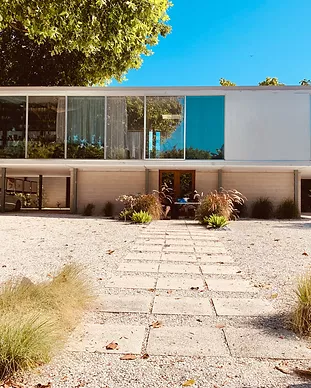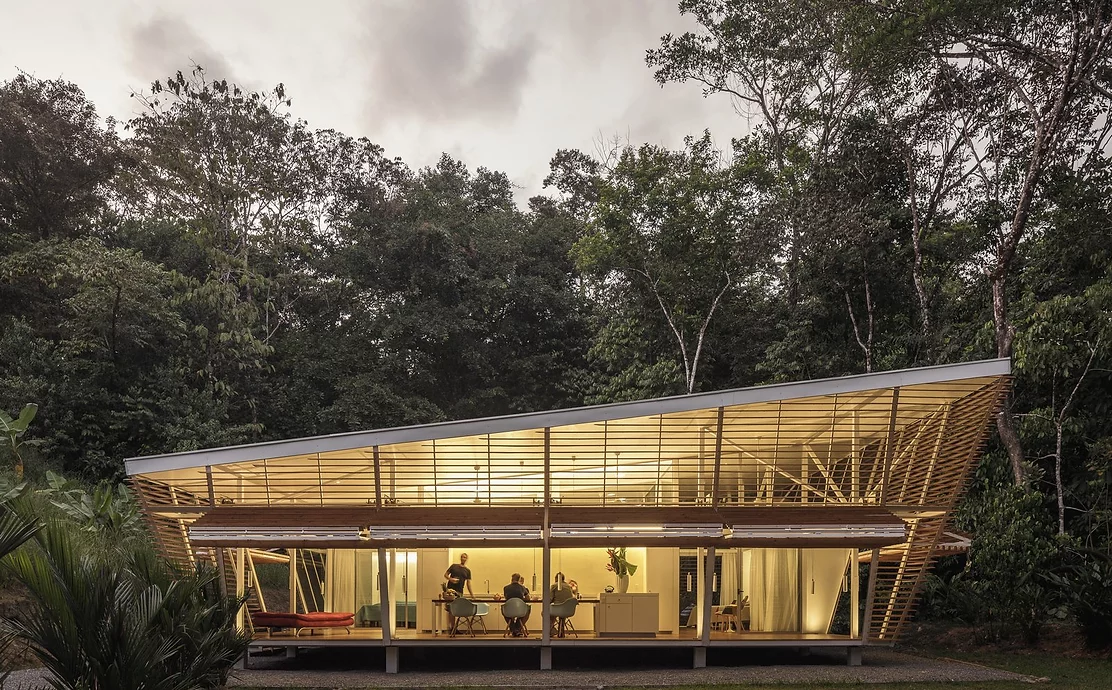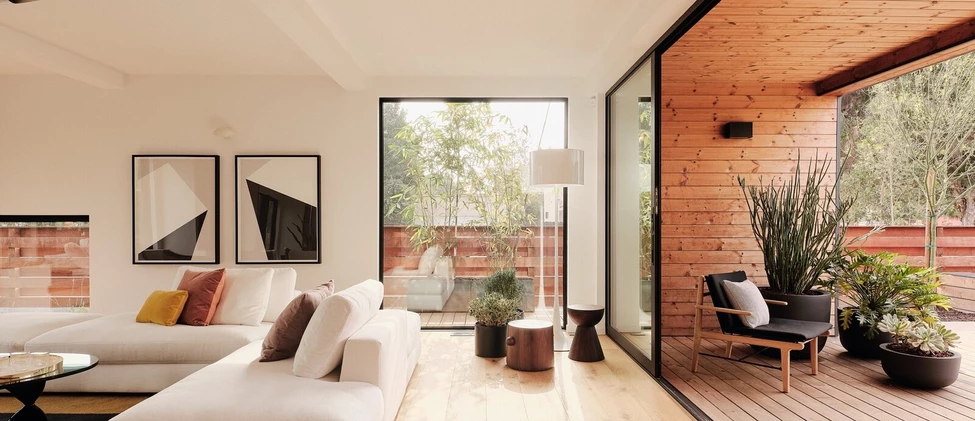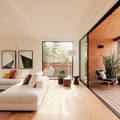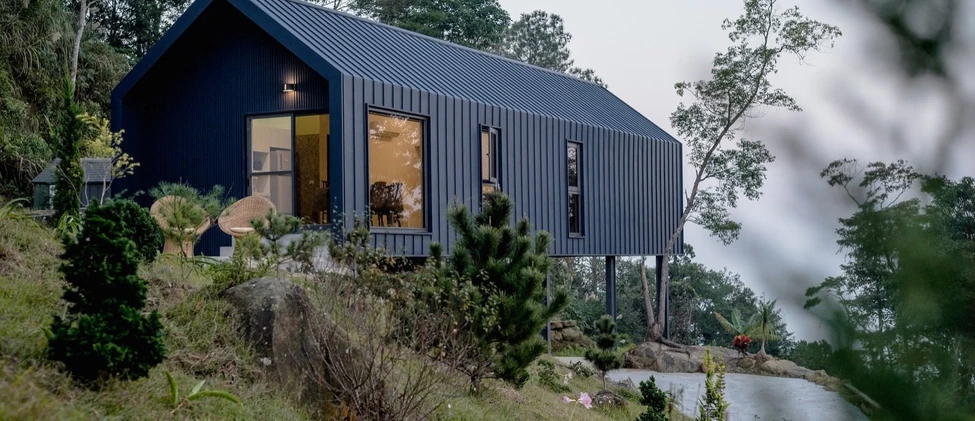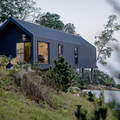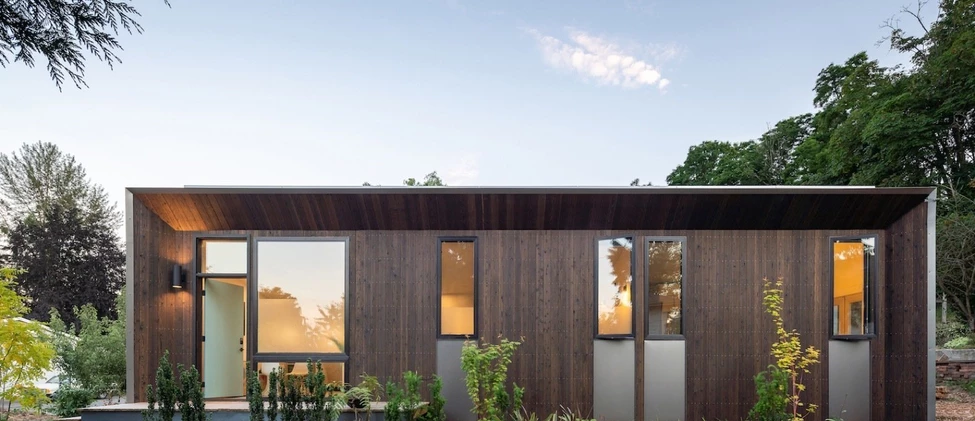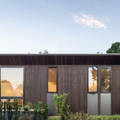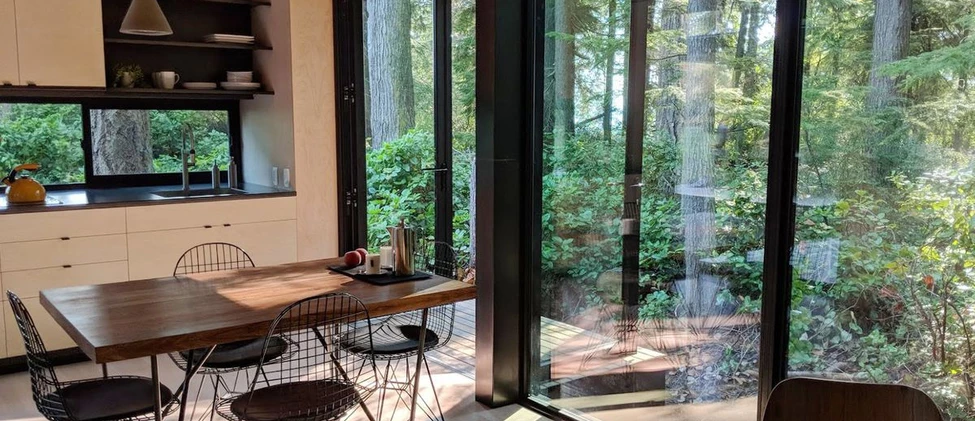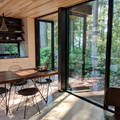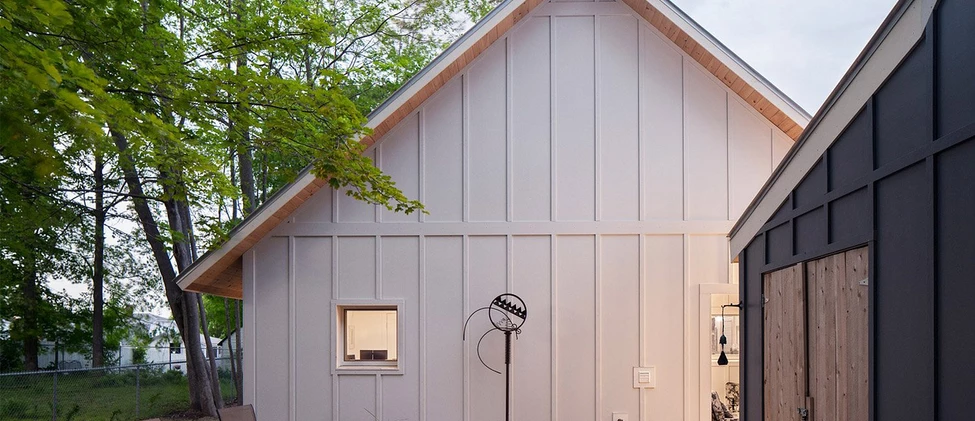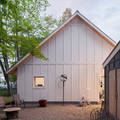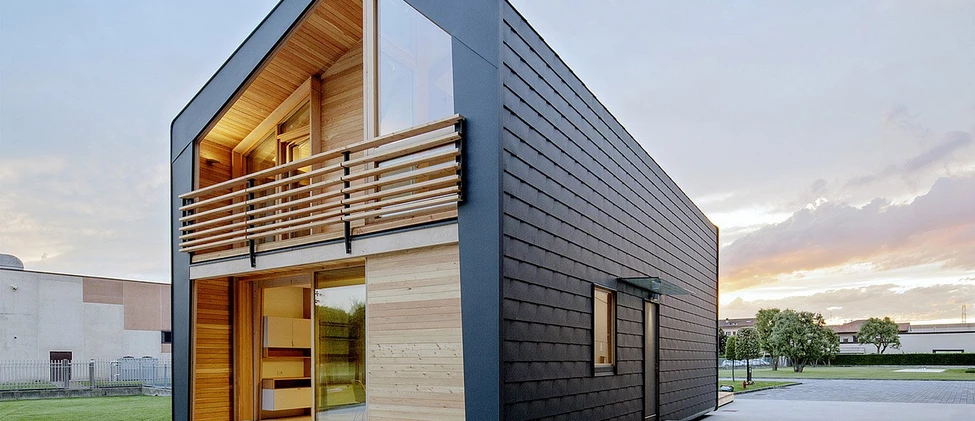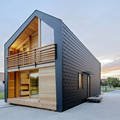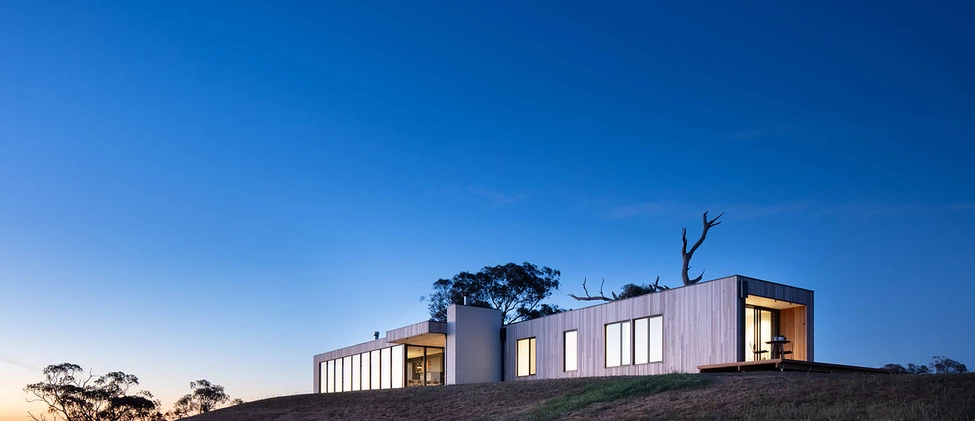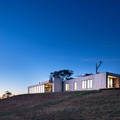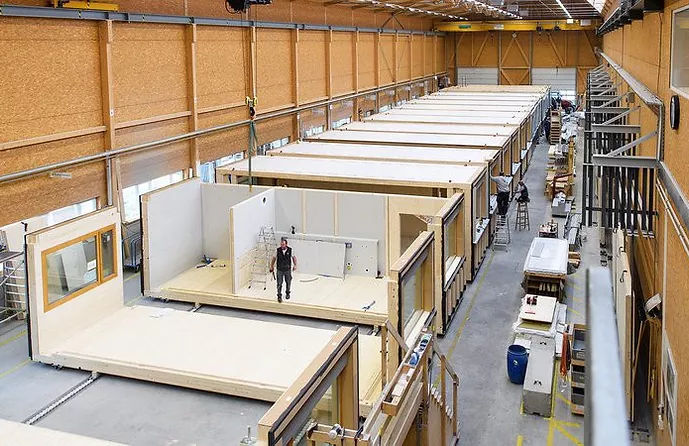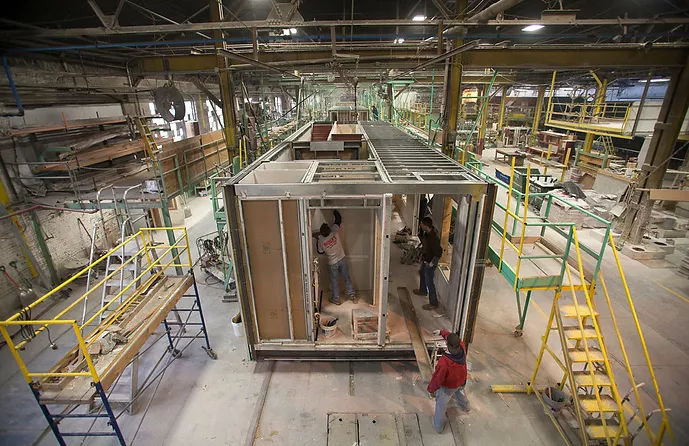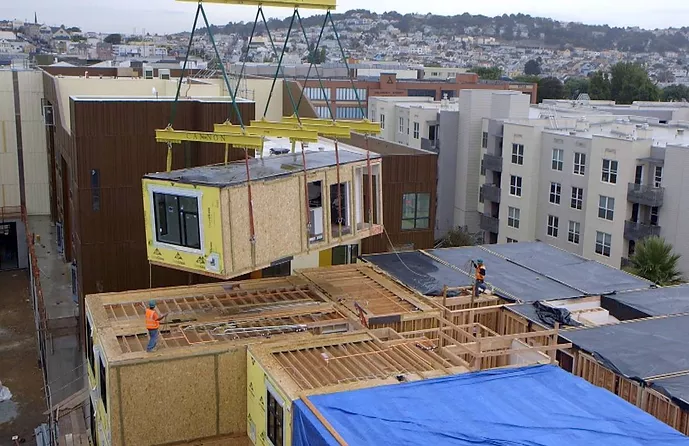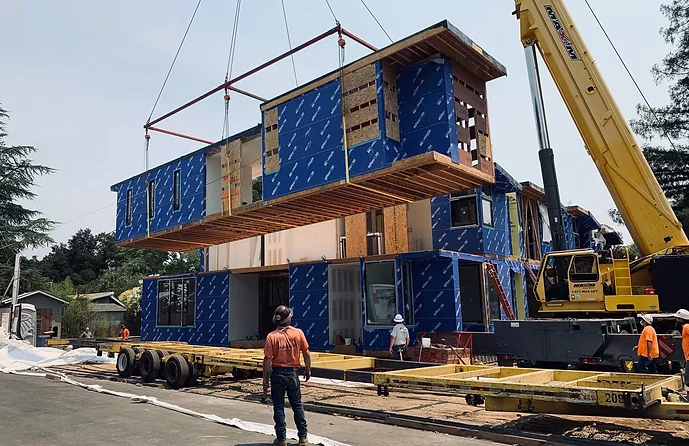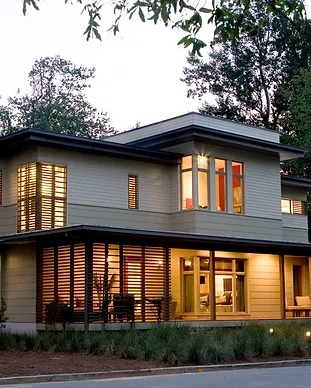Photo by Leonardo Finotti
What To Expect
What Are Prefab and Modular Homes?
Prefab
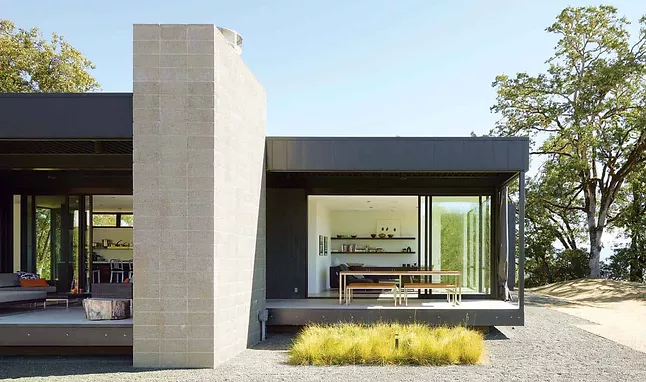
Image via OneKinDesign
Prefab
-
Prefab refers to homes that were previously designed and manufactured in a warehouse or factory.
-
Prefab is an 'umbrella' which includes modular houses, panel built, manufactured, etc. as well as those built using other methods such as panel construction and steel frame design.
-
Differs from modular homes because it is not built in self-contained unit or a building block

Image via OneKinDesign
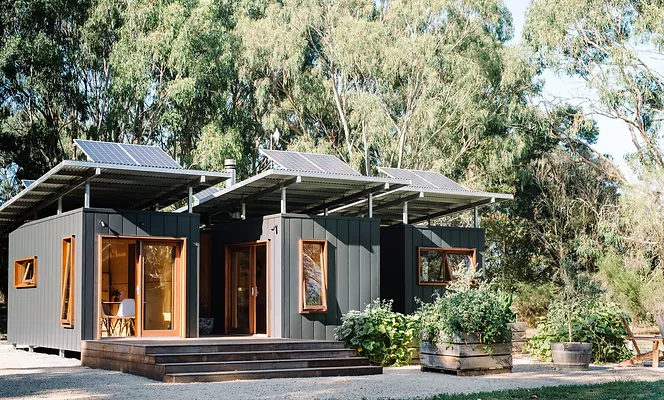
Image via Broadsheet
Modular

Image via Broadsheet
Modular
-
Built off-site, transported to your location, and anchored to permanent foundation faster and more affordably than on-site building
-
Can be visualized as completed rooms which are stacked together like building blocks (a modular home is not a mobile home!)
-
Almost complete when they arrive at the site with siding, kitchen appliances, flooring, etc.; others need a good deal of work on-site
The Under $50k Pre-Fab Home Assembled in 1 hour
The Under $50k Pre-Fab Home Assembled in 1 hour
Not your average building. Boxabls are built in a precision factory environment from cutting edge materials and are packed with the latest technology. This means your building will be stronger, last longer, and be more energy efficient.
They are:
Bug Resistant • Water Resistant • Fire Resistant • Wind Resistant • Mold Resistant
Full-Size Kitchen
Large Fridge • Double Sink With a View • Oven • Dishwasher • Microwave • Shaker Cabinetry
Bathroom
Deep shower/tub • Vessel sink • Large counter • Backlit Mirror • Sliding Glass Barn Door
Living
19.5ftx 19.5ft • 375 sq ft • 9'6" Ceilings • 8' Huge Doors & Windows • Wide Plank Composite Flooring • Built-In Ironing Center • Washer/Dryer • Heating & Air Conditioning
Ultra-Low Utility Bills
Insulation technology and included LED lighting saves you money every day
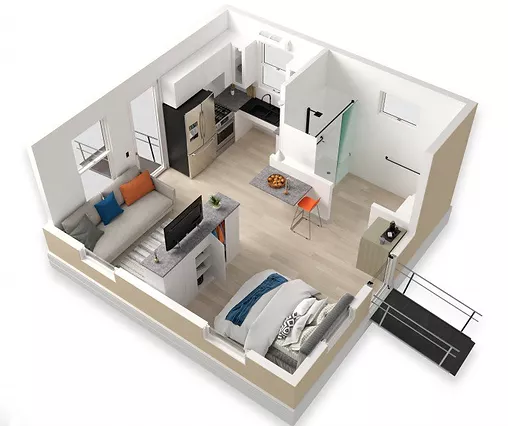
Image: boxabl
Design
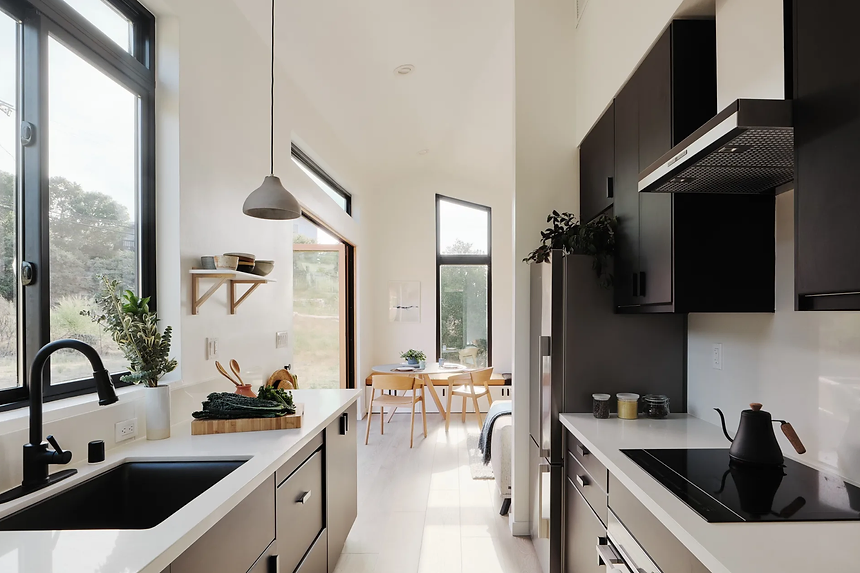
Koto by Abodou
Koto Design and Abodu, a U.S. based firm, teamed up to design their first modular home, bringing Koto’s signature Scandinavian simplicity with a Californian twist. Accessory dwelling units (ADUs) have become an increasingly popular option in California. These premade homes can be a solution to urban housing crises and maximize backyard use for hosting guests, renting or as an office space. Landscaping, external decking and a curated furniture packages are also available,
Cost of Prefab and Modular Homes
Prefab
Prefab homes can start from $150 to $400 per square foot, and this price can sometimes include the home’s interior fixtures (Curbed)
However, it is important to pay attention to whether the package of the prefab includes appliances, windows, flooring, insulation, wiring for electrical, and doors.
Modular
The average cost of a modular home can range between $90 and $120 per square foot to build.
A home built on-site starts at $150 per square foot. But the more complex your design and layout, the more your modular home could cost. Plumbing and electrical work could also add to the base price of your home.
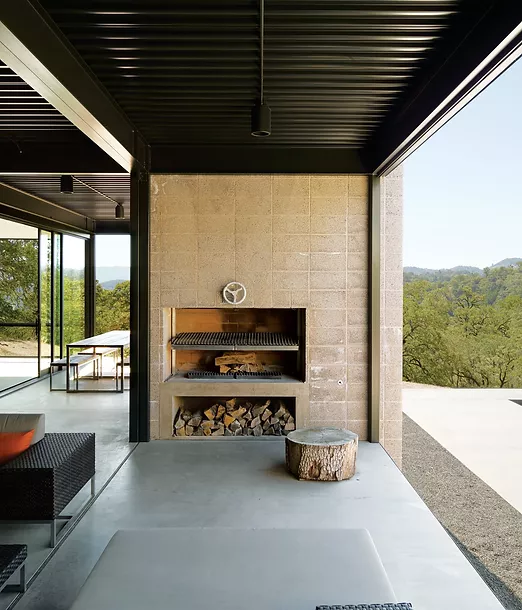
Image via Dwell
Did You Know?
Modular construction reduces construction waste by up to 77% and project cost by approximately 65%.
Benefits of Prefabricated Homes
Image via Dwell
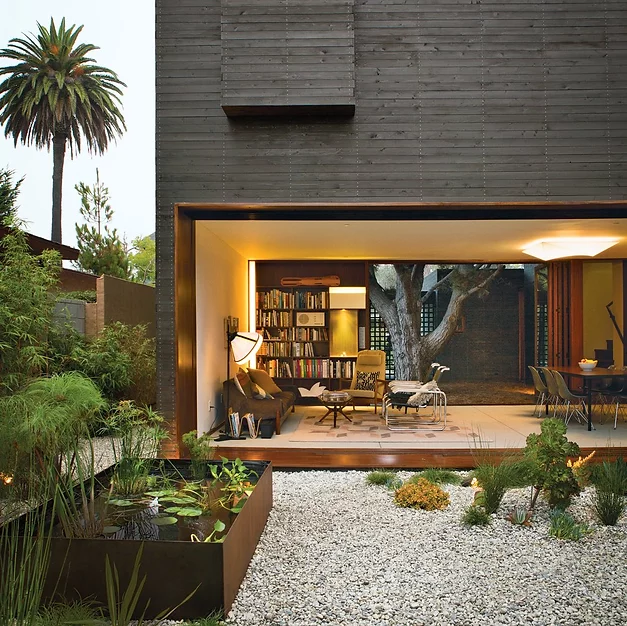
Reduced Costs
In areas where labor is very expensive, costs can be reduced by completing more of the work off-site. The streamlined process of assembling prefab and modular homes reduces time, energy, and material waste- contributing to overall cost reduction for these homes
Resilience and Durability
Modular homes undergo rigorous testing during assembly and undergo quality check that ensures compliance with industry standards. These homes tend to have better sealing that reduces heat loss and can be built to withstand high speed wind storms
Image via Dwell
Reduced Environmental Impact
Prefab and Modular homes are considered to be more sustainable than traditional home building. Prefabrication of trusses, frames and other parts can reduce waste by 52%, while smart design ensures energy effeciency
Unique Designs
You can add any style of window or architectural detail that you desire. Nearly all host plans can be turned into modular homes, which means you can create your ideal home.
Construction Time
Because they’re constructed in a factory, they can be built fairly quickly — in a matter of weeks, as opposed to months — because there are no weather delays.
Factory Assembly
How Long Does it Take to Build?
Modular homes can take anywhere from six to 18 weeks to complete the build, have it shipped to your lot, and have the setup completed. Prefab homes can be built in four to six months from start to finish.
The time it takes to finish your home will depend on the kind of upgrades and design you opt for. Upgrades and additional design components can make the build time longer. However, this is much faster than traditional homes, which require about eight months to several years to build.
Energy Efficiency in Modular Homes
Modular homes offer a great
alternative to higher energy efficiency in your home.
This video explains the ways in which a modular home can help achieve a net-zero home.
FAQ's
What Is The Difference Between Homes Built On-Site and Prefab or Modular Homes?
Some major differences include construction time and costs. Prefab and modular homes take a fraction of the time to set up and can be much more affordable than building a home. To read about other differences between homes built on-site and prefab homes, click here.
Can I Design my Own Prefab or Modular Home?
Yes! Many companies offer several home layouts and designs while offering options to customize or add features. Depending on the company you choose to work with, there are several ways to customize your prefab. Most builders offer different finish packages or upgrades, and some will allow different layout configurations, however these changes/upgrades could raise the total price you pay for your home.
Are Prefab or Modular Homes More Affordable than Built Homes?
Curbed explains that "prefab construction [tends to be] cheaper than stick-built homes by an average of 10 to 25 percent. Why? Mass-produced materials on an assembly line cut down costs because factories buy supplies in bulk. The cost of labor is also less because you don’t have to send carpenters, plumbers, and electricians to individual construction sites. And a faster build time saves money too".
Do Modular Homes Last As Long As Built Homes?
Modular homes are required to be designed according to local zoning codes and regulations and will last as long as a traditional home, if not longer. Many companies focus on using sustainable sourced, durable materials that will give homeowners peace of mind knowing they are not compromising quality for costs.
Can Prefab or Modular Homes Withstand Storms?
Since modular homes pass rigorous testing and must comply with regulations, they can be very suitable for storms and even hurricane 5 categories. FEMA has even recognized modular homes to be a great choice for soon to be homeowners looking for durability and safety.
What If I Plan On Selling My Modular Home?
Modular homes are considered to be real estate and appreciate over time, as opposed to mobile homes which depreciate since they are not categorized as real estate. Modular home value adjusts with the market, and will appreciate over time. These homes can be improved or expanded on-site to accommodate owners preferences and increase value (RiverViewHomesInc.)
Are Prefab Homes Actually Sustainable?
Curbed explains several reasons why prefab and modular homes promote sustainability, from the time of construction to years later. "The prefab construction process produces less waste, as factories are more efficient. Prefab companies are also more likely to reuse or recycle their waste at a factory. Factory-built homes and parts may also have tighter seams than stick homes, which makes heating and air conditioning more efficient.
And prefab companies are more geared toward eco-minded packages than many spec home builders; most prefab builders offer energy-efficient appliances, while some include sustainable materials (think: bamboo flooring) and add-on amenities like solar panels and rainwater collection systems. And in an era of increasing climate challenges, prefab construction scores another point due to its resiliency. Because prefab homes have to withstand being transported by truck, they are often structurally stronger than stick homes, a major plus in regions prone to earthquakes, hurricanes, or high winds"
Find Your Dream Prefab + Modular Home
Explore more options here. There are hundreds of modular and prefab companies worth checking out- these are a few to get you started
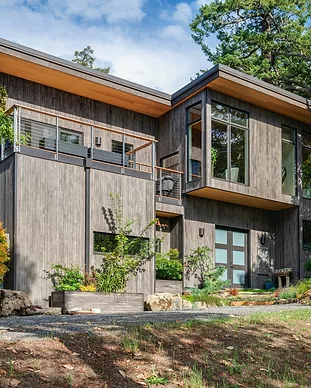
Method Homes
MethodHomes® is a custom manufacturer of precision–engineered, prefabricated structures.
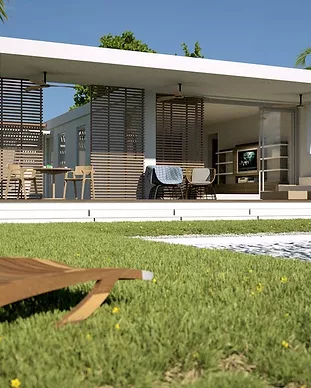
Hurricane Proof Homes
Modular homes are very resilient and can even be built to withstand Category 5 hurricanes. Check out Dwell's top 5 prefab companies building some of the most resilient prefabs
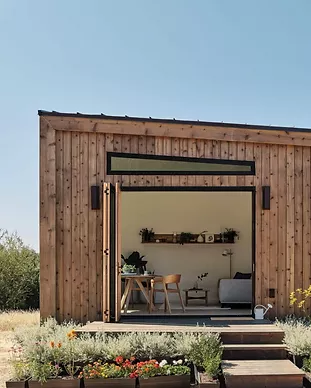
Abodu
Abodu offers homeowners in California and Washington unique and versatile ADUs perfect for renting, hosting guests or downsizing.
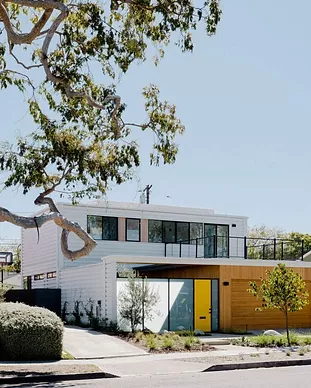
Connect Homes
Connect Homes offers high-end, high-style prefab homes in a variety of styles and sizes. Based in California, Connect Homes has been active helping victims of the state’s recent catastrophic wildfires to rebuild smarter.
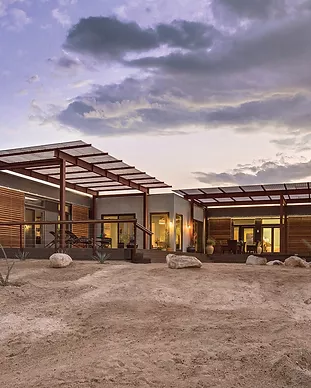
California Prefab Firms
Dwell highlights some California based prefab companies worth looking into. Sage Modern, Clever Homes and Proto Homes are a few that are discussed. Click below to explore.
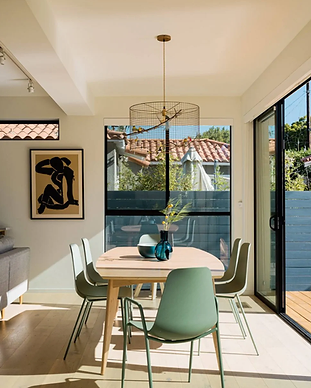
Connect Homes
Specializing in luxury modern modular designs and tiny houses, Wyoming-based Wheelhaus will deliver its prefab homes to any location in the US and Canada. The company offers a full range of prefab houses.
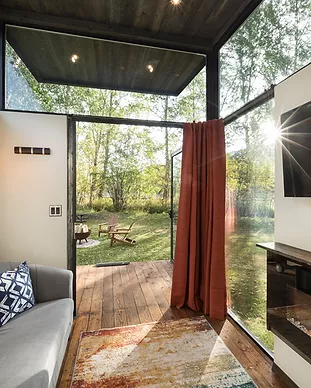
Wheelhaus
Specializing in luxury modern modular designs and tiny houses, Wyoming-based Wheelhaus will deliver its prefab homes to any location in the US and Canada. The company offers a full range of prefab houses.
